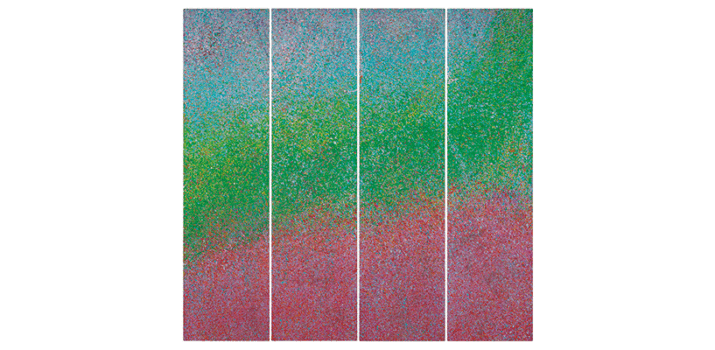Navigating between color and black & white: the Jean-Claude Hesselbarth exhibition at Espace Arlaud


To celebrate the centenary of Jean-Claude Hesselbarth (1925-2015), theassociation that “promotes […] the promotion and conservation of his drawings and paintings” invites you to discover the exhibition Jean-Claude Hesselbarth, l’ubac et l’adret. Living works at Espace Arlaud from September 5 to November 9, 2025.
In 2016, the artist’s widow, Mrs. Liliane Annen-Hesselbarth, donated to the BCUL the archival documents kept by Jean-Claude Hesselbarth.
We were able to meet co-curator Laura Saggiorato, who talked to us about Hesselbarth’s work and explained the concept behind the exhibition at Espace Arlaud.
How do you link the very colorful tachism with the black-and-white works, especially the drawings, by Jean-Claude Hesselbarth?
At the origin are places and gesture. When the artist finds himself in summer in the Drôme, he soaks up the colors that the landscape offers him. They explode before his eyes and he distributes, sows and spreads them with repeated gestures on canvases laid horizontally on the ground. When he returns to Lausanne in winter, a black monochrome takes over. He pins his sheets of paper to the wall, and with movements printed from his body to his hand, in a kind of dance, he fills them with subtle black strokes.
Uphill and downhill. How should we interpret Jean-Claude Hesselbarth’s reference to the mountains?
When Jaccottet speaks of Hesselbarth’s work, he captures its “two seemingly opposite sides, like the ubac and the adret in a mountain. On the shadow side, the drawings […] produce […] like a suspense of nocturnal dust [while] the paintings seem to be born in full sun, in full noon, exploding like a laugh of striking colors […]”.
You’ve chosen to focus on the artist’s last creative period. Can we still find echoes of his work in Lausanne, where he was born and lived part of his life?
In the 1950s, Jean-Claude Hesselbarth was one of the founders of the Collège vaudois des artistes concrets, which advocated the integration of art into built heritage. Several of this collective’s creations have been destroyed. However, a monumental ceramic on a wall at the entrance to the Pontaise Stadium survives the city’s renewal. And, of course, numerous pictorial or drawn works are preserved in Vaud institutions and museums.
The exhibition takes a new direction with an immersive experience, created by Fabrice Aragno, which will bring Hesselbarth’s work into dialogue with the digital world. Can you tell us a little more about it?
With a selection of drawings and paintings from the last period, we wanted to associate an approach opening onto a sensory journey. Thanks to a device that I won’t go into in detail here, the viewer’s movements will superimpose his or her own silhouette onto the movement of the artist’s works, projected in infinite variations – each visitor living an adventure.
To see the works for yourself, visit the exhibition Jean-Claude Hesselbarth, l’ubac et l’adret. Living works at Espace Arlaud from September 5 to November 9, 2025. The inventory of the Jean-Claude Hesselbarth collection is available online, and documents can be consulted by appointment in the Unithèque’s temporary consultation room, which will reopen to the public on September 8.
Image: Cum grano salis or Mon Monet, 1997, Acrylic paint and dispersion on door panels, 204 x 53 cm (Each of the four elements), INV 1998-086, Musée Jenisch Vevey, © Musée Jenisch Vevey